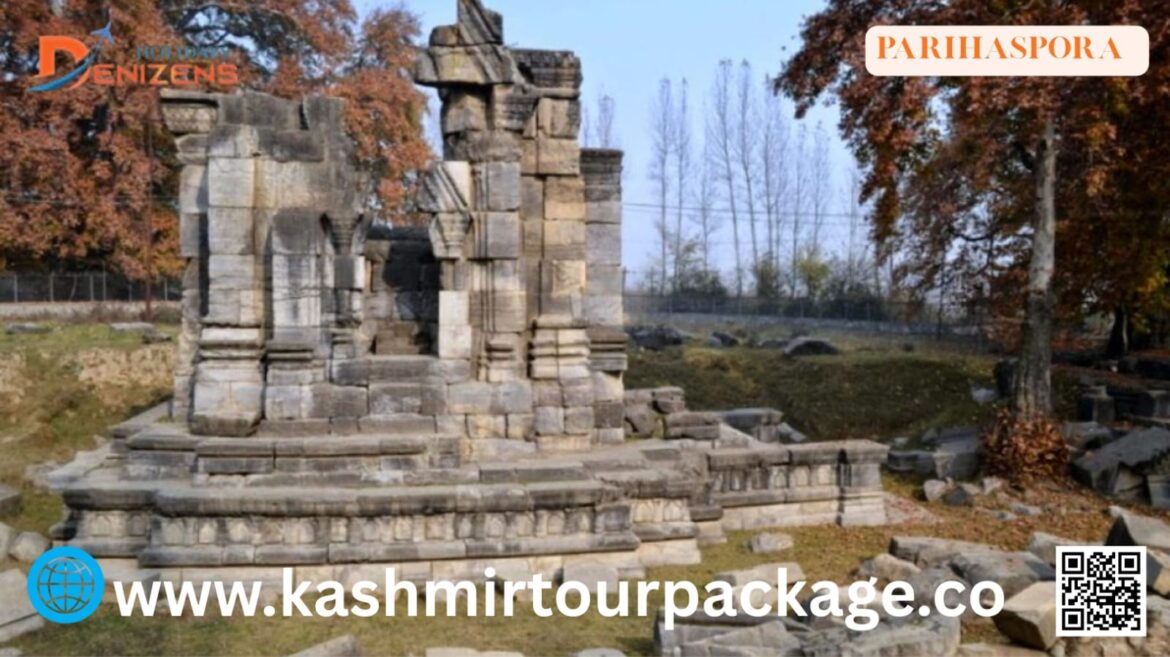Unveiling the Ancient Parihaspora Stupa: A Timeless Treasure in Your Kashmir Tour Package
Beyond the well-trodden paths of Srinagar’s gardens and Gulmarg‘s slopes lies a secret waiting to be discovered. Nestled in the breathtaking Kashmir Valley, where the Jhelum River whispers tales of old, is the ancient site of Parihaspora. For travelers seeking a journey that blends profound history with serene beauty, the 8th-century Parihaspora Stupa is an unmissable stop. Often overlooked, this archaeological gem offers a poignant and immersive experience, ideal for history buffs, couples on a romantic retreat, or families seeking a meaningful adventure [1].
The Royal Vision: A City of Joy and Power
The story of Parihaspora begins with a king of legendary ambition: Lalitaditya Muktapida of the Karkota Dynasty. Ruling in the 8th century CE, Lalitaditya was a mighty emperor whose influence stretched across the Indian subcontinent. To celebrate his victories and secure his legacy, he embarked on an audacious project: building a new capital [2].
He chose a elevated plateau northwest of Srinagar, naming it Parihaspur—the “City of Laughter.” This strategic location, perched above the Jhelum River, was chosen to be both defensible and magnificent. Lalitaditya’s vision was to create a cosmopolitan hub where Buddhist and Hindu traditions could flourish side-by-side [3].
According to the chronicle Rajatarangini, the king and his ministers raced to build spectacular monuments. The city was adorned with grand temples, one housing a colossal copper statue of Buddha that seemed to “reach up to the sky,” and another sheltering a massive gold idol of Vishnu. At the heart of this imperial capital stood the great stupa and monastery, symbols of spiritual enlightenment amidst worldly power. Visiting today feels like walking through the pages of this epic history, where every stone echoes with the ambition of a forgotten empire [4].
Architectural Marvels: Walking Through the Ruins
Today, Parihaspora is a landscape of serene ruins, locally known as “Kani Shahar” or the “City of Stones. [5]” While time has softened its grandeur, the scale and artistry of the remaining structures are awe-inspiring [6].
The most prominent structure is the Chankuna Stupa, believed to be dedicated to a loyal minister. Built from massive limestone blocks, it stands on the northwestern edge of the site. Look for the dramatic flights of steps, once guarded by intricately carved atlantes (mythical supporting figures), and the trefoil arches adorned with motifs of Buddha and Bodhisattvas. A circumambulatory path around the base invites visitors to walk the same meditative route as pilgrims from over a millennium ago [7].
Nearby lies the foundation of the royal monastery (rajavihara), a quadrangular complex that housed monks. You can still trace the layout of 26 cells that encircled a central courtyard, complete with shaded verandahs and sophisticated stone drainage systems—a testament to the advanced urban planning of the era [8].
Further south, the remains of a chaitya (prayer hall) reveal a 27-square-foot sanctum that was once supported by four ornate columns under a pyramidal roof. The entrance was flanked by more carved figures, their silent vigil a reminder of the artisans’ skill.
These structures were not just feats of engineering; they were masterpieces of syncretism, beautifully weaving together Buddhist and Brahmanical Hindu elements. This harmonious coexistence of faiths is a defining characteristic of Lalitaditya’s reign and adds a deep, philosophical layer to a visit [9].
A Legacy of Rise and Resilience
Parihaspora’s golden age was brilliant but, sadly, short-lived. After Lalitaditya’s death, the capital shifted back to Srinagar. The city’s decline was accelerated by later rulers who plundered its stones and metals to build their own monuments. The final blows came from wars and iconoclastic invasions in the subsequent centuries, which left the grand idols melted and the palaces in ashes [10].
Yet, to stand here today is not to feel loss, but resilience. The windswept silence speaks of a culture that once laughed in the face of empires and created a beacon of art and tolerance. For any visitor, it is a powerful, tangible connection to Kashmir’s rich, multi-layered history—a history where Buddhist peace and Hindu devotion once stood together.
Why Parihaspora Belongs in Your Kashmir Itinerary
In an age of crowded tourist spots, Parihaspora offers a rare gift: authenticity. Declared a monument of national importance, it remains refreshingly untouched by commercial tourism. There are no souvenir stalls or guided audio tours—just you and the echoes of history.
This makes it a perfect offbeat destination:
- For Honeymooners: Imagine a quiet, romantic picnic as the setting sun bathes the ancient stones in golden light.
- For Families: A fantastic open-air classroom where children’s imaginations can run wild, discovering a “real-life” ancient city.
- For Corporate Groups: An inspiring backdrop for team-building and reflection, far from the conventional conference room.
Plan Your Visit with Us
We believe the true magic of a Kashmir tour lies in uncovering its hidden stories. That’s why we’ve woven Parihaspora into our specially curated Kashmir tour packages. Whether you’re on a honeymoon tour, a corporate retreat, or a family vacation, we offer the best deals to create an itinerary that balances famous sights with unforgettable, lesser-known treasures like this.
From the comfort of a Srinagar houseboat to the adventure of Gulmarg and the serenity of Parihaspora, let us help you write your own story in the heart of Kashmir.
Ready to explore the City of Laughter?
Visit us at www.kashmirtourpackage.co or WhatsApp us at 9906250867 to book your journey and discover our exclusive offers. Your adventure into history awaits!
[1] https://en.wikipedia.org/wiki/Tourism_in_Jammu_and_Kashmir
[2]https://www.researchgate.net/publication/365361114_Comparative_study_and_mapping_of_vernacular_and_contemporary_architecture_of_Kashmir_region_with_a_focused_study_of_Srinagar_city
[3] https://baramulla.nic.in/tourist-place/parihaspora/
[4] https://en.wikipedia.org/wiki/Parihaspore
[5] https://www.researchgate.net/publication/378286550_pdf_jk#fullTextFileContent
[6] https://risingkashmir.com/parihaspora-to-be-revived-as-premier-heritage-tourism-destination/
[7] Brown, P. (2013) Indian architecture (the Islamic period). Read Books Ltd.
[8] Dar, A. A. (no date) ‘The Art of Woodwork in Kashmir.
[9] Wani, Burhan. (2022). Comparative study and mapping of vernacular and contemporary architecture of Kashmir region with a focused study of Srinagar city.. 4. 875-883. 10.35629/5252-0410875883
[10] Lawrence, W. R. (1895) The valley of Kashmir. H. Frowde.
